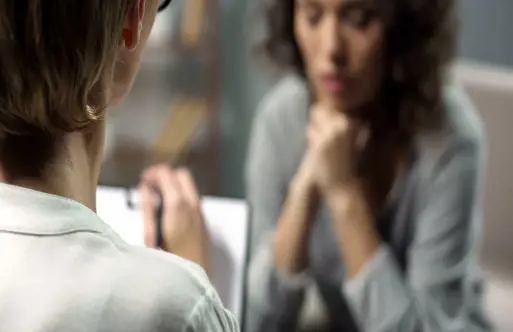Anne is 64 and twice a week she plays bingo. Last year she went on the internet for the first time. Not at her local library or computer centre but during her regular bingo night. She was surrounded by her friends, in a familiar environment and she loved it.
Alan is 67 and every Monday, he and some friends meet up to play darts and cards at the Likely Lads club. He tried the web for the first time in between a game of dominoes. Now he and his wife have booked their first holiday online.
Although Irene, 71, owns a computer, she didn’t know how to use the web. She only found out because an internet session was brought to her local residents’ meeting. Since then she has set up an email account and looked up her friend’s house in Australia on Google Earth.
Anne, Alan and Irene are like millions of older people in the UK. They might be aware of the web but lack the skills, confidence and importantly, the motivation to find out more. Maybe they never used a computer during their working life or just don’t see how the web is relevant to them.
They probably would have never sought out an internet course. But by bringing a taster session to their regular group and being in a familiar venue with people they know, Anne, Alan and Irene felt relaxed and comfortable enough to try something new.
This is the approach of Get Connected, Get Online - a new scheme that targets people who experience multiple barriers to getting online. Delivered by Digital Outreach, a social enterprise that specialises in reaching socially isolated groups, the programme was commissioned by the Department for Business, Innovation and Skills (BIS) and managed by Ofcom.
Most digital participation schemes rely on target groups being proactive - going to their local library to try the web or signing up for an internet course. Although these projects are making progress, the most digitally excluded people in society may not always respond to ‘pull’ techniques. Over 9 million people in the UK still don’t use the internet.
The ‘embedded outreach’ approach used by Digital Outreach takes the internet to older and disabled people and those on low incomes at existing community events they are familiar with, rather than relying on them to seek out ways to get online.
In the past it was thought that providing physical access to the internet would be the key to getting non-users online. Give people free access to the web and they’ll hunt out opportunities to try the internet. But recent research by the Communications Consumer Panel found that three key factors - motivation, access and skills - must all be present for someone to get online. Their research showed that people must first see a compelling personal benefit from using the internet and believe that this benefit outweighs the effort of getting online.
Arguably, getting interested is the most vital stage in the route to digital participation, as it was the most commonly cited reason for not getting online. Nearly 60 per cent of digitally excluded people don’t see a reason to get online, and of those aged 65 and over, this rises to 63 per cent.
So even with access to the internet, and the skills to use the internet effectively, without having identified a real and compelling personal benefit, a person is unlikely to make the effort to get online. To achieve this attitudinal change, an intimate understanding of what motivates people is needed.
Getting the skills
The next step is developing the skills. Support is critical for developing ability and confidence, and a lack of support can prevent even people with a compelling motivation from getting online.
The encouragement provided must also be the right kind. Contrary to popular belief, friends and family do not usually provide the right kind of support, and can reinforce a lack of confidence and mute motivation by even the gentlest of teasing, or by something as minor as speaking too quickly.
The Communications Consumer Panel’s research defines the right kind of support as: technical knowledge, availability, patience and enthusiasm. This can make the difference between someone becoming a regular user, or writing off their first experience of the internet as a negative memory. So it’s vital that the 9 million people who try the internet for the first time are given the right kind of support.
This takes us back to Anne who went online for the first time at her local bingo group. The internet session brought to the sheltered housing complex where she lives and socialises focused on things that she and her friends were interested in - particularly brain teasers and staying in touch with family.
This is a key factor in how Get Connected, Get Online sustains people’s interest in the web. Individuals who normally lead regular community events - residents’ meetings, social clubs or keep fit classes - are trained to deliver the web sessions themselves.
Rather than an anonymous person in a suit who the group has never met before, it’s the trusted session leaders showing people how to get online. These session leaders already know the interests of their groups and have strong relationships with them - making it easier to get people interested in the web.
Irene describes the session she had at her local residents’ group, ‘Everyone there had met Clare before and she made us feel very welcome. It was very informal and I think having Clare explain it to us and us being able to follow what she was doing on the laptops she brought helped it to sink in better.’
Although many participants in the Get Connected, Get Online project were initially reluctant to learn about the internet, 77 per cent reacted positively to the session when it was delivered by someone they already knew, and 62 per cent reported that having the session take place as part of their group meeting encouraged them to find out more about the web.
64 per cent of respondents said that taking part in the Get Connected, Get Online session helped them to see the personal benefits of the internet. Over 67 per cent of participants went on to make a positive behavioural change as a result of taking part.
Anne is one of these people. After the session came to her sheltered housing complex she felt confident enough to buy a computer and get wireless broadband installed. She has used the internet a lot since then, particularly to play online brain games.
‘It’s educational and keeps my mind active and I really enjoy it,’ she says. ‘I can send and receive emails and use MSN to keep in touch with my grandchildren. I would miss the internet now if I didn’t have it, whereas before because I didn’t know about it, I didn’t miss it.’
Six months on, Digital Outreach looked again at the long-term impact of the Get Connected, Get Online project. The results showed that session leaders who had been trained to give people information about the internet during the programme were continuing to encourage a wide range of groups to get online, demonstrating the legacy of support that had been left.

















